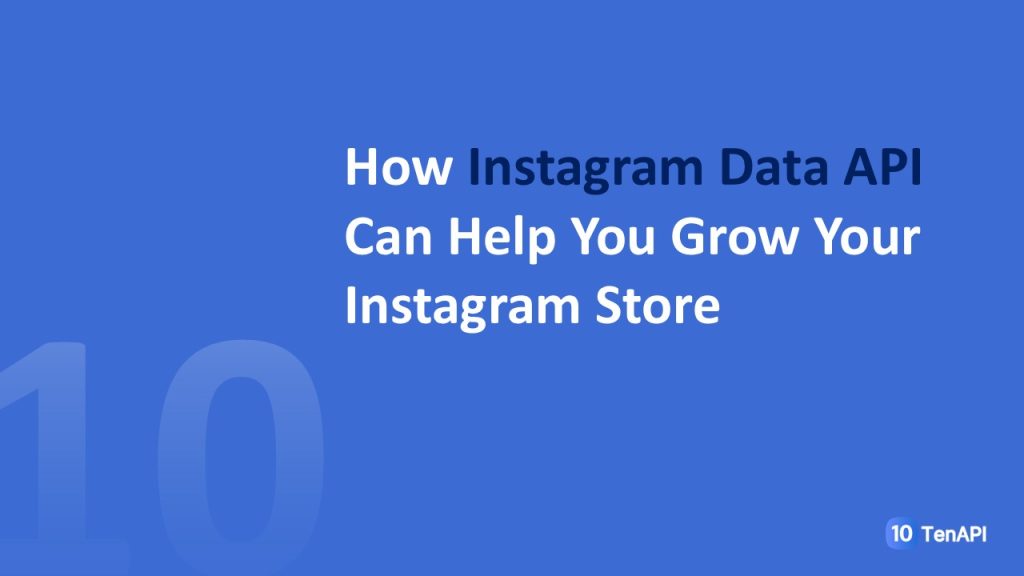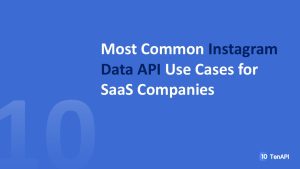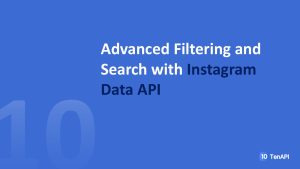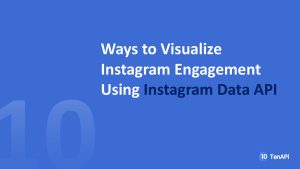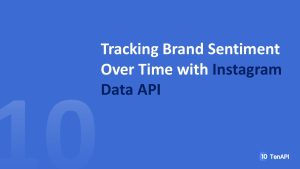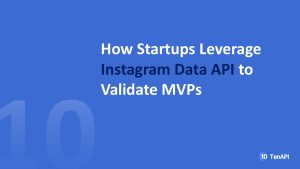Instagram has become one of the most powerful digital storefronts for modern businesses. Whether you’re selling clothing, handmade crafts, or digital products, your Instagram page can serve as both your showroom and sales funnel. But here’s the catch — growth doesn’t happen by chance. To truly scale your store, you need data.
That’s where the Instagram Data API comes into play. This tool gives you direct access to valuable insights about your audience, content, and performance. In this article, we’ll explore exactly how you can use the Instagram Data API to grow your store, improve engagement, and make data-driven marketing decisions.
Understanding the Instagram Data API
What Is the Instagram Data API?
The Instagram Data API is an interface provided by Meta that allows developers and businesses to access real-time data from Instagram accounts. Through the API, you can pull metrics like followers, reach, impressions, engagement rate, and much more — all without manually checking your Instagram app every day.
How the API Works
Think of the API as a bridge that connects your Instagram account to other applications, such as analytics dashboards, marketing tools, or CRMs. Once integrated, it can automatically collect and update information about your content and audience.
Difference Between Basic Display API and Graph API
Instagram offers two main APIs:
-
Basic Display API: Allows access to basic profile data and media (best for simple integrations).
-
Instagram Graph API: A more advanced version designed for business accounts, offering detailed analytics, insights, and management features.
If you’re serious about growing your store, the Graph API is the one you’ll want.
Benefits of Using Instagram Data API for Store Growth
Access to Real-Time Insights
Forget guesswork — the API gives you immediate access to real-time performance metrics. You’ll know exactly which posts are generating clicks, what time your audience is most active, and how engagement changes daily.
Tracking Audience Engagement
Using the API, you can analyze how your audience interacts with your content — likes, comments, saves, and shares. This helps you identify what type of content resonates most with your followers and tailor your strategy accordingly.
Automating Data Collection and Reporting
Manually tracking analytics is time-consuming. The API can automate data collection, generate performance reports, and even push insights directly to your dashboard or Google Sheets. That means less manual work and more time focusing on creativity and sales.
Enhancing Marketing Strategy with Instagram API Data
Identifying Your Target Audience
The API reveals who your followers are — their age, gender, location, and activity patterns. This data allows you to build buyer personas and tailor marketing campaigns that speak directly to your ideal customers.
Crafting Personalized Campaigns
Once you understand your audience’s preferences, you can personalize your ads and captions. For example, if most of your followers engage with videos featuring product demos, you can focus more on creating similar content.
Analyzing Competitor Performance
By comparing your insights with publicly available data from competitors, you can identify gaps in their strategy and capitalize on them — such as posting times, hashtags, or content types that perform well.
Using Instagram API to Optimize Product Listings
Tracking Top-Performing Posts and Products
With API data, you can quickly identify which products attract the most attention and engagement. This allows you to highlight bestsellers, adjust pricing, or improve visuals to boost conversions.
Using Hashtags and Keywords Strategically
The API can help analyze which hashtags drive the most reach. You can use this insight to refine your hashtag strategy, focusing on those that align with your niche and attract the right audience.
Measuring Conversions and ROI
It’s not just about likes. By tracking clicks, profile visits, and link interactions, you can calculate your return on investment (ROI) and adjust your campaigns for maximum profit.
Integrating Instagram Data API with Other Tools
Linking with Google Analytics
Connect your API data to Google Analytics to get a full picture of how Instagram traffic impacts your website sales and user behavior.
Using API Data in CRM and Email Marketing
Imagine sending personalized emails based on user engagement. By syncing API data with your CRM, you can segment your audience and run highly targeted campaigns.
Connecting to AI-Driven Analytics Tools
AI tools can process your Instagram data to predict trends and recommend posting schedules or content formats — giving you a competitive edge.
Automating Repetitive Tasks with Instagram API
Auto-Posting and Scheduling Content
Stop wasting hours scheduling posts manually. Use the API to automate your posting calendar and maintain consistency without the burnout.
Monitoring Brand Mentions and Feedback
The API can help track brand mentions, tags, and comments — so you can quickly respond to feedback or collaborate with fans and influencers.
Streamlining Influencer Collaborations
If you work with influencers, the API can track campaign performance in real-time — engagement rates, conversions, and audience demographics — so you know which partnerships deliver results.
How to Get Started with Instagram Data API
Setting Up a Facebook Developer Account
To use the API, you’ll first need a Facebook Developer account (since Instagram is owned by Meta). Once set up, you can create a new app for your Instagram Business account.
Requesting API Access and Permissions
Different data types require different permissions. For example, to access audience insights, you’ll need “Instagram Insights” permission. Make sure your app is properly reviewed and approved by Meta.
Using SDKs and Libraries for Integration
If you’re not a developer, don’t worry. There are ready-made SDKs and libraries (like Python’s instagram-graph-api or Node.js wrappers) that simplify the integration process.
Best Practices for Using Instagram Data API
Maintain Data Privacy and Compliance
Always handle data ethically. Make sure your integrations comply with Meta’s data policies and privacy laws like GDPR.
Keep Data Updated and Relevant
Old data can mislead your marketing efforts. Use scheduled updates via the API to keep your reports accurate.
Avoid API Overuse and Errors
Every API has rate limits. Plan your data requests efficiently to avoid temporary bans or errors.
Common Challenges and How to Overcome Them
Handling API Limits
If your app sends too many requests, it may get throttled. Use caching techniques to store frequently accessed data and minimize requests.
Managing Authentication Tokens
Access tokens expire periodically. Automate token refreshes to prevent downtime.
Ensuring Data Accuracy
Sometimes the API might not sync instantly. Use error-handling functions to detect and correct inconsistencies.
Real-World Examples of Growth Through Instagram Data API
Case Study: Small Boutique Store
A small online boutique used the API to identify their most engaging product posts and replicate those styles. Within three months, their engagement rose by 35% and sales by 50%.
Case Study: Influencer-Led Brand
An influencer-run skincare brand leveraged the API to track audience demographics and time their posts based on activity spikes. Their ROI on paid promotions increased by 60%.
The Future of Instagram API for eCommerce
AI-Driven Analytics
Expect the API to integrate more deeply with AI tools, enabling predictive analytics and automated decision-making.
Predictive Engagement Modeling
With advanced data insights, you’ll be able to forecast engagement and sales trends before they happen.
Integration with AR Shopping Experiences
As Instagram expands its AR features, API data could power immersive shopping experiences where users virtually “try on” products.
Conclusion
The Instagram Data API is more than just a tech tool — it’s a growth engine. By unlocking real-time insights, automating workflows, and integrating with your marketing stack, you can make smarter decisions and build a thriving Instagram store.
Whether you’re a small boutique or a global brand, embracing data is the key to turning followers into loyal customers. The future of Instagram commerce belongs to those who understand their data — and use it wisely.
FAQs
1. What data can I access using the Instagram Data API?
You can access follower demographics, engagement metrics, post insights, story analytics, and ad performance data.
2. Is the Instagram API free to use?
Yes, the API is free, but it has rate limits and requires app approval from Meta for extended access.
3. Can I use the API without coding skills?
While some setup requires technical knowledge, you can use third-party tools or no-code platforms that integrate the API automatically.
4. How can the API help boost engagement?
By analyzing data, you can post at the right time, use effective hashtags, and create content your audience loves.
5. What’s the future of Instagram API in 2025 and beyond?
Expect more AI-powered analytics, automation, and integration with virtual shopping features.

